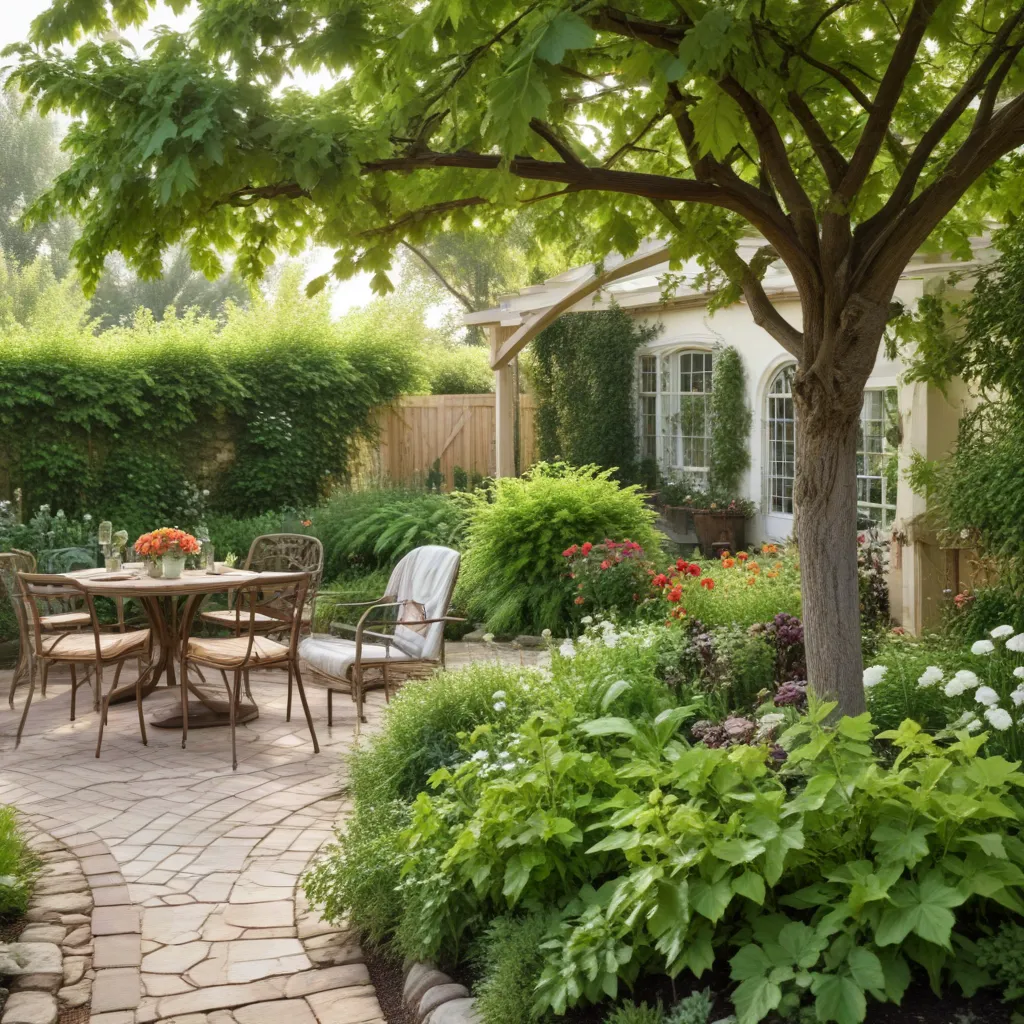
If you’re a passionate wine enthusiast, there’s no better way to elevate your at-home experience than by cultivating a vibrant, wine-inspired garden. At the Wine Garden Inn, we believe that the perfect pairing goes beyond just the bottle – it’s about crafting a holistic, sensory delight that combines the bounty of your own backyard with the nuanced flavors of your favorite vintages.
Wine-Inspired Garden Design
Incorporating Vineyard Aesthetics
Channeling the rustic charm of a winery can add instant ambiance to your garden. Consider incorporating architectural elements like a trellised archway or a weathered barrel planter to evoke the feeling of strolling through a lush vineyard. Strategically placed garden sculptures, such as a metal vine or a whimsical grape cluster, can also help tie the space together.
Grape Varieties for the Home Garden
Of course, no wine lover’s garden would be complete without the star of the show – grapes! While cultivating a full-fledged winery may be outside the scope of most home gardeners, growing a few grape varieties can be a rewarding and surprisingly attainable endeavor. Look for compact, table grape varieties like Concord, Flame Seedless, or Thompson Seedless that thrive in backyard settings. Be mindful of your local climate and soil conditions to ensure the best chance of success.
Complementary Plantings for Wine Pairings
Beyond the grapes themselves, consider incorporating other garden-fresh ingredients that pair beautifully with your favorite wines. Herbs like rosemary, thyme, and oregano lend themselves well to savory Mediterranean dishes and robust red wines. Crisp lettuces, juicy tomatoes, and fragrant basil create the perfect foundation for a refreshing Sauvignon Blanc or Pinot Grigio-based salad. And don’t forget about fruits – raspberries, blackberries, and figs can elevate dessert wines or spark inspiration for sangria.
Soil and Sun Requirements
Ideal Soil Conditions for Grape Growing
Grapes are relatively hardy plants, but they do have specific soil preferences for optimal growth and fruit production. Aim for a well-draining, loamy soil with a pH between 5.5 and 6.5. Amending your garden beds with compost or other organic matter can help improve soil structure and fertility. Avoid heavy, clay-based soils, as they can lead to issues like root rot.
Understanding Sun Exposure Needs
Grapes thrive in full sun, requiring at least 6-8 hours of direct sunlight per day. When planning your garden layout, choose a spot that receives ample sunshine throughout the growing season. Strategically positioning your grape vines to maximize exposure can make a significant difference in the quality and ripeness of your fruit.
Irrigation and Drainage Considerations
While grapes are relatively drought-tolerant, they do require consistent moisture, especially during the fruit-bearing months. Ensure that your garden bed is well-draining to prevent issues like fungal diseases. Drip irrigation or soaker hoses can help deliver water directly to the plant’s roots, reducing evaporation and ensuring efficient water usage.
Grape Cultivation Techniques
Pruning and Trellising Methods
Proper pruning and trellising are essential for grape cultivation, as they help shape the plant’s growth and optimize fruit production. Familiarize yourself with cane pruning, spur pruning, and other techniques to maintain a healthy, well-structured vine. A sturdy trellis or espalier system will provide the necessary support and air circulation for your grapes to thrive.
Pest and Disease Management
Like any crop, grapes can be susceptible to a variety of pests and diseases. Keep a vigilant eye out for issues like powdery mildew, downy mildew, or grape phylloxera, and address them promptly with organic or eco-friendly solutions. Encouraging beneficial insects, such as lacewings and ladybugs, can also help manage common garden pests.
Harvesting and Processing Grapes
The excitement builds as your grapes approach maturity. Monitor sugar levels and pH to determine the optimal harvesting time, and gently handpick the clusters when they’re at their peak. Whether you plan to enjoy your grapes fresh, transform them into homemade wine, or experiment with grape jams and preserves, proper post-harvest handling is key to preserving their exceptional flavor.
Winery-Themed Landscape Elements
Rustic Decor and Furnishings
Beyond the plants themselves, infusing your garden with winery-inspired decor can further enhance the immersive experience. Incorporate weathered wooden benches, wrought-iron trellises, or repurposed wine barrels to create cozy seating areas and focal points. Hang string lights or lanterns to set the mood for al fresco dining and wine tasting under the stars.
Water Features and Hardscaping
The soothing sound of flowing water can transport you to the tranquility of a vine-covered pergola or a picturesque château. Consider adding a small fountain, a bubbling stream, or a serene reflecting pool to your garden design. Complement these water features with intentional hardscaping, such as paved pathways, stone walls, or a custom-built wine cellar entrance.
Gardening Tools and Accessories
Embrace the winemaker’s aesthetic with specialized gardening tools and accessories. Invest in a Hori Hori knife, a versatile Japanese gardening tool, to assist with precision pruning and planting. Display your pruners, loppers, and other essential gear in a rustic tool caddy or a reclaimed wine crate. Even practical items like watering cans and garden markers can be selected to align with your winery-inspired theme.
Whether you’re a seasoned oenophile or a budding wine enthusiast, transforming your backyard into a wine lover’s paradise can be a deeply rewarding and immersive experience. By carefully curating your garden’s design, soil conditions, and cultivation techniques, you’ll not only elevate your at-home wine tasting but also foster a genuine connection to the art of winemaking. So, grab your wine key and get ready to embark on an unforgettable journey of viticulture and gastronomy in your very own Wine Garden Inn-inspired backyard.
